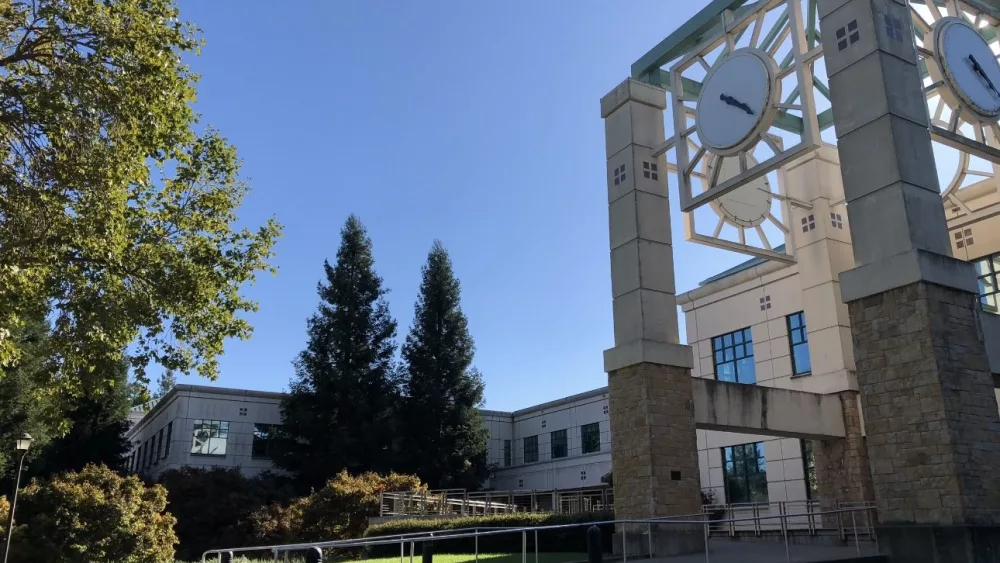Who would even pause to respond before signaling a resounding “Yes!” to being pro-growth? How else do we expand opportunities for business to thrive? How else do we develop employee talent and protect our organizations from competitive threat? When it comes to business, if you’re not growing, you’re dying, right?
But in the realm of urban gentrification and development, the answer isn’t quite so easy; these rules don’t exactly apply. As California experiences historic lows in unemployment, historic highs in housing prices and a booming national economy, many in our society are left behind. California’s booming economy holds a dark and once quiet secret—its growth isn’t leaving enough room for most people to participate along with it.
Many within our lower middle class, alongside those suffering mental health challenges, have lost their homes in search of shelter, safety and something to eat. It’s clearer than ever that California’s economic successes are inextricably linked to homelessness of the worst kind. California now has more than 25 percent of our entire country’s homeless population. San Diego, San Jose and San Francisco simultaneously share the spotlight as three of America’s most economically successful cities, and three of the country’s top 10 cities for homelessness.
As housing prices in these cities have risen over the past two years, homelessness has exploded 15 percent. Our "golden state" gets all the notice for its gorgeous weather, beaches and the incessant droning of our tech-lords and celebrities. Yet California continues to lag behind most states when it comes to much more important societal metrics. We remain at the bottom of the list for high school graduation rates, reading comprehension, math skills, college readiness, fiscal stability, and infrastructure quality while ranking first for homelessness and poverty. What a tragedy—and what a contrast—to all the growth and success we hope to achieve together.
The problem is manyfold. As you may recall, I’ve touched upon our state’s unwieldy pension obligations being ignored by our legislators in this column. Now we’re learning that Governor Brown’s attempts to paper over this near limitless pension debt has come at the expense of monies that were once used to support local government’s low-income housing needs. By one estimate, San Diego has lost more than $200 million in low-income housing funds in the last six years. It’s no wonder the city can’t keep up with the negative consequences of urban gentrification. Brain-numbing regulations stifle low-income housing, while state coffers are being redirected from city housing improvements—an awful combination.
Last year’s homeless tragedies gave us one more example of just how imbalanced our system truly is. As the ranks of the homeless in San Diego swelled in number (exceeding the entire populations of Kentfield, St. Helena and even Sebastopol), a once-thought "rare" virus struck hundreds of those living among the shadows of San Diego’s glimmering new condominiums. Hepatitis A, spawned from the unclean and unsanitary living conditions of those on the street, infected hundreds of people. A virus rarely seen in this country—and rarely fatal—struck more than 500 people in San Diego and took 19 lives.
Regrettably, it’s not just the larger cities with this issue anymore. More rural communities such as Lake, Butte and El Dorado counties have experienced homelessness growth rates over the past two years of 43 percent, 76 percent and 113 percent, respectively, according to researchers at the San Francisco Chronicle. In the North Bay, we now see this routinely under our own highway overpasses and downtown areas. Careful choices must be made by our civic leaders and voters.
The North Bay has its success stories and its challenges. Our cover story, written by Jessica Zimmer, takes a look at the transformation of downtown Napa with developer Todd Zapolski’s First Street Napa project, a growth success story.
But since the October 2017 firestorm, the North Bay is experiencing new obstacles that threaten growth. Writer Jane Hodges Young provides an update of the current state of tourism and the efforts of Sonoma County Tourism and Visit Napa Valley to spread the word nationwide that the smoke has cleared and Wine Country is open for business. And writer Bonnie Durrance takes a look at the challenges faced by employers in recruiting skilled professionals. Before the firestorm, there was a dire lack of affordable housing, and then our housing supply was wiped out. Housing is critical to maintain a thriving business community. Those homes that remain have seen their pricing outstrip our ability to provide commensurate wage acceleration to pay for them.
As we weigh the merits of growth within our own communities, a balanced approach is vital to a successful, long-term outcome. Where do you stand on the matter of growth vs. no growth? As always, I want to hear from you. You’re on the front lines of this battle and have unique perspectives—please email me at Lawrence@Northbaybiz.com.
Author
-

Lawrence Amaturo is the publisher of NorthBay biz magazine. In addition to the magazine, Amaturo Sonoma Media Group is owner/operator of Waterdrop Digital Media and eight radio stations serving the North Bay region: KZST, KSRO, Froggy 92.9, 97.7 The River, Hot 101.7, and The Wolf 102.7. Lawrence and his wife, Susan, a local physician, are active in several philanthropic endeavors, and enjoy golfing, skiing and traveling with their adult daughters.
View all posts




